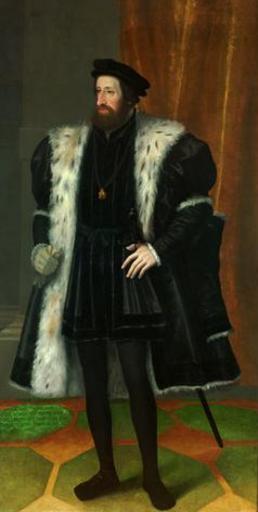MAKE A MEME
View Large Image

| View Original: | Ferdinand_I,_Holy_Roman_Emperor,_son_of_Juana_of_Castile,_nephew_of_Catherine_of_Aragon.jpg (238x472) | |||
| Download: | Original | Medium | Small | Thumb |
| Courtesy of: | www.flickr.com | More Like This | ||
| Keywords: european nobility europeannobility catherine of aragon catherineofaragon juana of castile juanaofcastile portrait spanish royality spanishroyality european royalty europeanroyalty six wives of henry viii sixwivesofhenryviii tudors Ferdinand I (10 March 1503 – 25 July 1564) was a Central European monarch from the House of Habsburg. He was Holy Roman Emperor from 1558, King of Bohemia, Hungary from 1526. He ruled the Austrian hereditary lands of the Habsburgs most of his public life, at the behest of his elder brother, Charles V, Holy Roman Emperor and King of Spain. Ferdinand was Archduke of Austria from 1521 to 1564. After the death of his brother–in–law Louis II, Ferdinand ruled as King of Bohemia, Hungary (1526–1564).[1] When Charles retired in 1556, Ferdinand became his de facto successor as Holy Roman Emperor, and de jure in 1558,[1][2] while Spain, the Spanish Empire, Naples, Sicily, Milan, the Netherlands, and Franche-Comté went to Philip, son of Charles. Ferdinand's motto was Fiat justitia et pereat mundus: "Let justice be done, though the world perish". Ferdinand I (10 March 1503 – 25 July 1564) was a Central European monarch from the House of Habsburg. He was Holy Roman Emperor from 1558, King of Bohemia, Hungary from 1526. He ruled the Austrian hereditary lands of the Habsburgs most of his public life, at the behest of his elder brother, Charles V, Holy Roman Emperor and King of Spain. Ferdinand was Archduke of Austria from 1521 to 1564. After the death of his brother–in–law Louis II, Ferdinand ruled as King of Bohemia, Hungary (1526–1564).[1] When Charles retired in 1556, Ferdinand became his de facto successor as Holy Roman Emperor, and de jure in 1558,[1][2] while Spain, the Spanish Empire, Naples, Sicily, Milan, the Netherlands, and Franche-Comté went to Philip, son of Charles. Ferdinand's motto was Fiat justitia et pereat mundus: "Let justice be done, though the world perish". | ||||